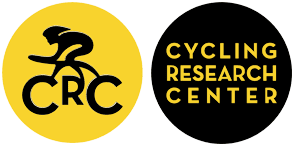GPS-Based Evaluation of Activity Profiles in Elite Downhill Mountain Biking and the Influence of Course Type
Keywords:
cycling, intensity, motion analysis, performanceAbstract
This study aimed to profile the activity patterns of elite downhill (DH) mountain bikers during off-road descending, and to determine the influence of course types on activity patterns. Six male elite DH mountain bikers (age 20 ± 2 yrs; stature 178.8 ± 3.1 cm; body mass 75.0 ± 3.0 kg) performed single runs on one man-made (MM) and one natural terrain (NT) DH courses under race conditions. A 5 Hz global positioning systems (GPS) unit, including a 100 Hz triaxial accelerometer, was positioned in a neoprene harness between the C7 and T2 vertebrae on each rider. GPS was used to determine the temporal characteristics of each run for velocity, run time, distance, effort, heart rate (HR), rider load (RLd) which reflects instantaneous rate of change in acceleration, and accumulated rider load (RLdAcc), which reflects change in acceleration over the event duration. Significant differences were found between NT and MM courses for mean velocity (p<.001), peak velocity (p=.014), mean RLd (p=.001) and peak RLd (p=.002). Significant differences were also found both within and between courses for all velocity parameters, when analysed by intensity zone (p<.05). No significant differences were found between courses for HR parameters by zone, though significant differences were revealed between HR zones within courses (p<.05). This study indicates that course terrain has a significant impact on the activity profiles of DH and that GPS can provide a practical means of monitoring these differences in activity.
Downloads
Published
How to Cite
Issue
Section
Copyright (c) 2013 Journal of Science and Cycling

This work is licensed under a Creative Commons Attribution-NonCommercial 4.0 International License.
Authors contributing to Journal of Science and Cycling agree to publish their articles under a Creative Commons CC BY-NC-ND license, allowing third parties to copy and redistribute the material in any medium or format, and to remix, transform, and build upon the material, for any purpose, even commercially, under the condition that appropriate credit is given, that a link to the license is provided, and that you indicate if changes were made. You may do so in any reasonable manner, but not in any way that suggests the licensor endorses you or your use.
Authors retain copyright of their work, with first publication rights granted to Cycling Research Center.






